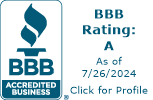Disinfection efforts directly affect the health and safety of a facility’s patients, employees, visitors and customers. It is critical that building managers continue to audit and revise their infection prevention plan. Flooring is one surface that facility managers should consider adding to their infection control plans. Some managers view floor disinfection as a wasted effort, believing the result does not justify the costs associated with products and labor.
Today, the industry standard for floor disinfection is changing due to a growing awareness of the harmful bacteria that can be found on floors and its potential to spread to other high-touch areas via shoes, hands or equipment that might roll through. As a result, facilities increasingly rely on floor disinfection procedures to mitigate adverse effects on patients as well as the costs associated with dangerous pathogens. High foot traffic shouldn’t keep cleaning teams or managers from properly disinfecting floors. By following these strategies, every facility can create a disinfection program that is both functional and effective.
Often lying undetected, it’s important to identify how germs transfer from the floor to other critical surfaces. For example, wheelchairs area a prominent source of cross-contamination in health care facilities. Visitors can also spread germs when handbags or other personal items are placed on the floor and then moved to a table or other high-touch areas. Although these are two common contributors, it’s important to remember that pathogens transfer through the air and by contact. So even though floors aren’t typically considered a high touch surface, it’s still a potential hotbed of bacteria if not properly disinfected.
Dusting and the removal of dirt and debris is critical to any floor cleaning routine as it removes dust particles that can host harmful bacteria. When selecting a dusting product, you should choose a tool that traps dirt, dust and hair as opposed to products that simply redistribute debris. Also, choosing a dusting product that is double-sided will promote greater efficiency. Keeping dirt and germs outside of the building is a good prerequisite to starting your floor care program on the right foot. By establishing a pre-cleaning routine that involves clearing the dirt and debris from the outside areas, you can minimize the amount of dirt contaminating your floors on the inside. Installing proper entrance matting will also help to contain any stray dirt trying to make its way inside the building.
After the floors have been cleared of dust, dirt and debris, it is time to disinfect. Choosing the right disinfection product is crucial, as it impacts the safety of your building’s visitors. You should always consider these three things when selecting your product. First, choose a chemical concentrate with a shortened dwell time to minimize obstruction in high traffic areas. Second, using the right amount of chemicals is important to ensure proper cleaning, disinfection and sanitizing of surfaces. Finally, using disposable mop pads will help reduce the cross-contamination of bacteria on facility floors.
Any facility that hosts visitors or employees has a responsibility to keep a safe and clean environment that limits the spread of germs. EcoCare is a Eco-friendly janitorial company that specializes in disinfecting floors in any kind of facility.
Credit: B. Oberle, Cleaning & Maintenance Magazine

